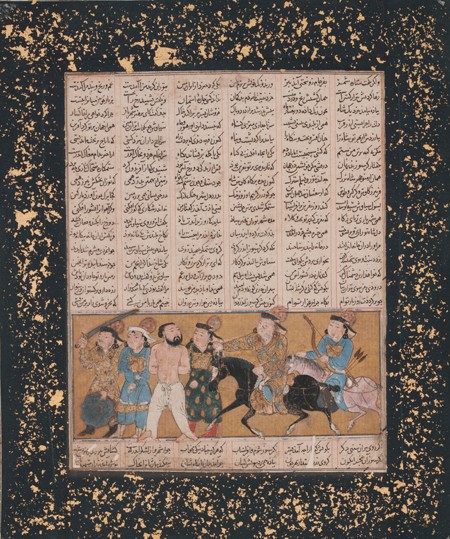Beginning in the early thirteenth century, the Mongols, a coalition of peoples from the steppe region north of China, united under Chinggis Khan and conquered huge areas of the Eurasian continent, their empire extending, at its peak, to present-day Hungary in the West and as far as the Korea peninsula in the East. In large part because of these conquests, the thirteenth and fourteenth centuries saw a period of unparalleled commercial, cultural, and diplomatic exchange across Eurasia. Much of the scholarship on Mongol culture since the last century has adhered to the view that Mongol artistic patronage and taste were “influenced” by other, better-established cultures. In China, for example, culture of the Mongol period is framed in the context of increasing “sinicization.” This view is simplistic at best and implies that art produced under Mongol rule was in essence derivative, or worthy of study only under the rubric of the traditional Chinese art-historical narrative. Although in the last fifteen years there has been a modest surge in the number of attempts to reexamine the Mongols’ agency in many aspects of their civilization, the role of dress and other arts in the formation of a Mongol imperial identity has yet to be fully examined.
My dissertation, “Fashioning Mongol Identity in China (c. 1200–1368),” completed during my residence at CASVA, defines, categorizes, and contextualizes Mongol court dress and textiles. In this way it shows how the Mongol elite constructed a political and cultural identity for themselves through dress and other forms of material culture and how this identity was translated pictorially in representations of Mongols by other Eurasian civilizations. During the first year of my CASVA fellowship I was able to survey most of the materials discussed in the dissertation, including textiles, paintings, and manuscripts in collections in East Asia, Europe, Turkey, and the United States.
To understand the genesis and development of the Mongol vestimentary system, “Fashioning Mongol Identity in China” begins with a chapter surveying the clothing of peoples who had the most impact on the Mongols: Uighur, Khitan (Liao), Jürchen (Jin), and Tangut, with some discussion of Song dynasty court fashion (from around the tenth to the thirteenth century). The second chapter looks at the early period of Mongol empire formation (1206–1259), examining the material and textual evidence of textiles the early Mongols wore, where these were produced, and who wove them. The third chapter surveys the textiles, costumes, and associated ceremony of the reign of Khubilai Khan (1260–1294) and the Yuan dynasty more broadly. The Mongol vestimentary system, while not codified until after Khubilai’s reign, arguably was fully formed during his tenure as emperor of China. Court ceremony, which relied heavily on dress, reached its apex during this period. Drawing from historical texts, this chapter also surveys textile production sites, clothing regulations, and styles of dress. The fourth chapter widens the geographic scope of the project, studying the western end of the Mongol empire with an emphasis on defining Ilkhanid court dress and its relationship to Yuan court dress, a task made more complicated by the lack of archaeological material. This chapter relies principally on illuminated manuscripts and textual descriptions. Some evidence for textiles produced in the Ilkhanid is also provided by material that was preserved in European church treasuries. The end of the dissertation looks even farther west, to representations of Mongols and Mongol-produced textiles in northern Italian painting of the early fourteenth century. These European materials illustrate the range of Mongol visual culture, which by this time had had a visible impact on early Italian Renaissance art, most clearly through textiles. Since European narratives of the Mongol empire are referenced throughout the dissertation, this chapter provides a bookend for the reception of descriptions and stories of the Mongols in Europe.
This project takes into account the exchange of materials, decorative motifs, and weaving technologies across Asia. It necessitated the technical analysis of textiles (weaves and materials) and classification of types of dress; readings of primary source texts; and consideration of court paintings, tomb murals, and illuminated manuscripts. It is the first study of dress of this period that considers all of these materials together in order to provide an overview of Mongol court dress. Through an exploration of the means by which the Yuan manipulated court dress prototypes in East Asia, as well as a comparison with the dress adopted at the Mongol-ruled Ilkhanid court in Iran, I conclude that the Mongols used dress as a political tool—a practice that played an important role in establishing them as the rulers of more sedentary peoples.
